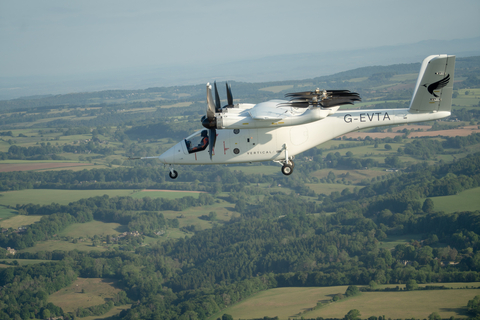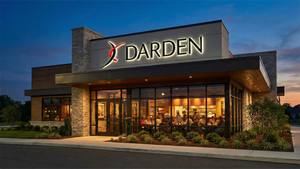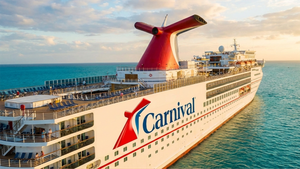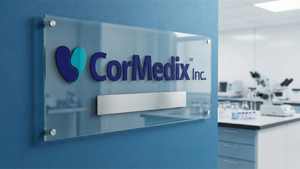- First-ever piloted wingborne flight of a winged eVTOL in European open airspace
- Landmark flight follows approval from the UK Civil Aviation Authority, an important step on its path toward certification and commercial operation
- 30,000 in-flight parameters and data points measured, with the aircraft flying as expected
- On track to complete piloted transition flight in 2H 2025
Vertical Aerospace (Vertical) [NYSE: EVTL], a global aerospace and technology company that is pioneering electric aviation, today announced it has made European aviation history with the first-ever piloted wingborne flight of a winged electric vertical take-off and landing (eVTOL) aircraft in open airspace.
This press release features multimedia. View the full release here: https://www.businesswire.com/news/home/20250527234746/en/

The VX4 prototype soars across the UK countryside from Cotswold Airport, following approval from the UK Civil Aviation Authority to fly in open airspace.
The landmark flight of the VX4 prototype, piloted by Chief Test Pilot Simon Davies, saw the aircraft take-off, fly and land like a conventional aircraft, with lift generated by the wing.
Soaring across the UK countryside from Cotswold Airport, the VX4 prototype demonstrated controlled wingborne flight in open airspace for the first time, marking a critical step toward commercial deployment as part of Vertical’s Flightpath 2030 strategy.
The UK Civil Aviation Authority (CAA) approved the flight through open airspace at Cotswold Airport, the UK’s largest private airport, by extending Vertical’s Permit to Fly. This followed a rigorous review of tens of thousands of pages of safety and technical documentation.
Chief Test Pilot, Simon Davies, said: "Taking the aircraft beyond the airfield and cruising over the Cotswolds for the first time was truly special and a career highlight for me. Our performance predictions were absolutely spot on, and the aircraft took off as a natural extension of all the ground tests and preparation we've done.
There are aircraft which are safe and capable but not always enjoyable to fly. The VX4 was not only safe but was an absolute pleasure. It is responsive, smooth, simple to operate and the sound level from the propellers is quiet and pleasant in the cockpit. An honour to fly, and a real testament to the incredible team behind it.”
Vertical is currently the only company globally flying a piloted winged eVTOL prototype that’s been developed under a Design Organisation Approval (DOA) from the CAA – a DOA is required to hold a Type Certificate, required for commercial passenger operations. The CAA is working closely with the European Union Aviation Safety Agency (EASA) for their concurrent validation and certifying the VX4 to the highest safety standards required for commercial use.
Stuart Simpson, CEO, Vertical Aerospace, said: "Achieving piloted wingborne flight in open airspace under the oversight of the UK CAA is an important moment in our certification journey. Operating under the UK’s rigorous regulatory framework means we share the burden of safety with our regulator - every step must be approved, and that’s by design. It amounts to a mini certification of our prototype and gives us a clearer, faster path to type certification.
Our decision to put a pilot into the VX4 early was deliberate - real-world piloted flight delivers insights no simulation can. This milestone proves the capability of the aircraft and the maturity of our programme as we move toward commercial operations."
Advancing the UK’s world-class aerospace sector
This achievement has also been supported by early UK government investment through programmes including the Aerospace Technology Institute and the Future Flight Challenge. These initiatives have contributed to the development of Vertical’s technology and flight test campaign, and form part of wider efforts to advance the UK’s net zero and aerospace ambitions.
UK Secretary of State for Business and Trade, Jonathan Reynolds, said: “This is a fantastic milestone for Vertical and for the UK’s world-class aerospace sector. Breakthroughs like this show how government and business can work together to keep the UK at the cutting edge of innovation. Our modern Industrial Strategy will double down on this success by giving investors the confidence they need to back UK advanced manufacturing for the long term, bringing good, green jobs and growth across the UK as part of our Plan for Change.”
What is the Significance of Wingborne Flight?
In Phase 3 of testing – wingborne flight – the VX4 operates like a conventional aircraft using lift generated by its wings, rather than relying solely on rotor thrust. This low-power, quiet, and range-efficient mode of flight is key to making electric air travel practical, scalable, and economically viable.
Jim Currier, President and CEO, Honeywell Aerospace Technologies, said: “This significant achievement underscores the ability of our partnership to unlock new and innovative modes of transport, and we are proud Honeywell Anthem avionics and flight control computers and software could play a key role in supporting such a defining moment for the industry.”
David Stepanek, EVP & CTO, Bristow Group, said: “The VX4’s successful demonstration of wingborne flight marks a significant step towards commercial readiness. As the global leader in innovative and sustainable vertical lift, we look forward to continuing to partner with Vertical to unleash the disruptive advantages of this aircraft.”
Jill Blickstein, Vice President of Sustainability, at American Airlines, said: "This milestone is a key step toward safely scaling electric aviation, which we believe will play a key role in the future of our industry. We’re proud of Vertical’s progress toward sustainable travel.”
By achieving stable and controlled wingborne flight, Vertical has taken a significant step toward the next major milestone: a full piloted transition flight, expected in the second half of 2025. This will demonstrate the VX4’s ability to shift seamlessly between vertical lift and forward cruise – the operating mode it will use in passenger service.
During the wingborne flight phase, the VX4 will reach speeds of up to 150 mph (120 knots) and altitudes close to 2,000 ft under real-world conditions. Engineers captured more than 30,000 in-flight data parameters, confirming the aircraft performed exceptionally across stability, control, and energy usage.
A Foundation Built on Rigorous Testing
To prepare for piloted wingborne flights, Vertical completed thousands of hours of lab, simulation, and high speed ground testing, including:
- 7.2 million fatigue cycles on each propeller blade to simulate lifespan loads over the flight test campaign
- 15.2 metre battery pack drop test, comparable to fuel-tank testing in traditional rotorcraft
- Full-scale thermal runaway propagation test on a VX4 sub-pack, indicating safe flight and landing is possible even in the event of a battery fire
- Over 3,000 hours of component and integration testing on flight control computers to ensure system reliability and performance
Notes to editors
Vertical’s piloted flight test programme explainer:
- Phase 1: Tethered: the VX4 prototype will perform stabilised hover while loosely tethered to the ground. COMPLETE 12 September 2024
- Phase 2: Thrustborne: the VX4 prototype will take-off and land vertically and conduct low speed flight manoeuvres with lift generated by the propellers. COMPLETE 4 February 2025
- Phase 3: Wingborne: the VX4 prototype will take-off, fly and land like a conventional aircraft, with lift generated by the wing. COMMENCED 22 May 2025
- Phase 4: Transition: the VX4 prototype will transition between thrustborne and wingborne flight, and vice versa. Expected before YE 2025
About Vertical Aerospace
Vertical Aerospace is a global aerospace and technology company pioneering electric aviation. Vertical is creating a safer, cleaner and quieter way to travel. Vertical’s VX4 is a piloted, four passenger, Electric Vertical Take-Off and Landing (eVTOL) aircraft, with zero operating emissions. Vertical will also be launching a hybrid-electric variant, offering increased range and mission flexibility to meet the evolving needs of the advanced air mobility market.
Vertical combines partnering with leading aerospace companies, including GKN, Honeywell and Leonardo, with developing its own proprietary battery and propeller technology to develop the world’s most advanced and safest eVTOL.
Vertical has c.1,500 pre-orders of the VX4, with customers across four continents, including American Airlines, Japan Airlines, GOL and Bristow. Certain customer obligations are expected to be fulfilled via third-party agreements. Headquartered in Bristol, the epicentre of the UK’s aerospace industry, Vertical’s experienced leadership team comes from top tier automotive and aerospace companies such as Rolls-Royce, Airbus, GM and Leonardo. Together they have previously certified and supported over 30 different civil and military aircraft and propulsion systems.
Forward-Looking Statements
This Press Release contains forward-looking statements within the meaning of the Private Securities Litigation Reform Act of 1995. Any express or implied statements contained in this release that are not statements of historical fact may be deemed to be forward-looking statements, including, without limitation, statements regarding the design and manufacture of the VX4, the features and capabilities of the VX4, business strategy and plans and objectives of management for future operations, including the building and testing of our prototype aircrafts on timelines projected, completion of the piloted test programme phases, selection of suppliers, certification and the commercialization of the VX4 and the hybrid-electric VX4 variant and our ability to achieve regulatory certification of our aircraft product on any particular timeline or at all, the potential exercise of the Tranche A Warrants following the satisfaction of the performance conditions and the proceeds issued from such potential exercise, as well as statements that include the words “expect,” “intend,” “plan,” “believe,” “project,” “forecast,” “estimate,” “may,” “should,” “anticipate,” “will,” “aim,” “potential,” “continue,” “is/are likely to” and similar statements of a future or forward-looking nature. These forward-looking statements reflect our current views with respect to future events and are not a guarantee of future performance. Actual outcomes may differ materially from the information contained in the forward-looking statements as a result of a number of factors, including, without limitation, our limited operating history without manufactured non-prototype aircraft or completed eVTOL aircraft customer order; our potential inability to raise additional funds when we need or want them, or at all, to fund our operations; our limited cash and cash equivalents and recurring losses from our operations raise significant doubt (or raise substantial doubt as contemplated by PCAOB standards) regarding our ability to continue as a going concern; our potential inability to produce or launch aircraft in the volumes or timelines projected; the potential inability to obtain the necessary certifications for production and operation within any projected timeline, or at all; the inability for our aircraft to perform at the level we expect and may have potential defects; our history of losses and the expectation to incur significant expenses and continuing losses for the foreseeable future; the market for eVTOL aircraft being in a relatively early stage; any accidents or incidents involving eVTOL aircraft could harm our business; our dependence on partners and suppliers for the components in our aircraft and for operational needs; the potential that certain strategic partnerships may not materialize into long-term partnership arrangements; all of the pre-orders received are conditional and may be terminated at any time and any predelivery payments may be fully refundable upon certain specified dates; any circumstances; any potential failure to effectively manage our growth; our inability to recruit and retain senior management and other highly skilled personnel; we have previously identified material weaknesses in our internal controls over financial reporting which if we fail to properly remediate, could adversely affect our results of operations, investor confidence in us and the market price of our ordinary shares; as a foreign private issuer we follow certain home country corporate governance rules, are not subject to U.S. proxy rules and are subject to Exchange Act reporting obligations that, to some extent, are more lenient and less frequent than those of a U.S. domestic public company; and the important factors discussed under the caption “Risk Factors” in the Company's Annual Report on Form 20-F filed with the U.S. Securities and Exchange Commission (“SEC”) on March 11, 2025, as such factors may be updated from time to time in the Company’s other filings with the SEC. Any forward-looking statements contained in this release speak only as of the date hereof and accordingly undue reliance should not be placed on such statements. the Company disclaims any obligation or undertaking to update or revise any forward-looking statements contained in this release whether as a result of new information, future events or otherwise, other than to the extent required by applicable law.
View source version on businesswire.com: https://www.businesswire.com/news/home/20250527234746/en/
Contacts
For more information:
Justin Bates, Head of Communications justin.bates@vertical-aerospace.com +44 7878 357 463
Samuel Emden, Head of Investor Affairs samuel.emden@vertical-aerospace.com +44 7816 459 904




